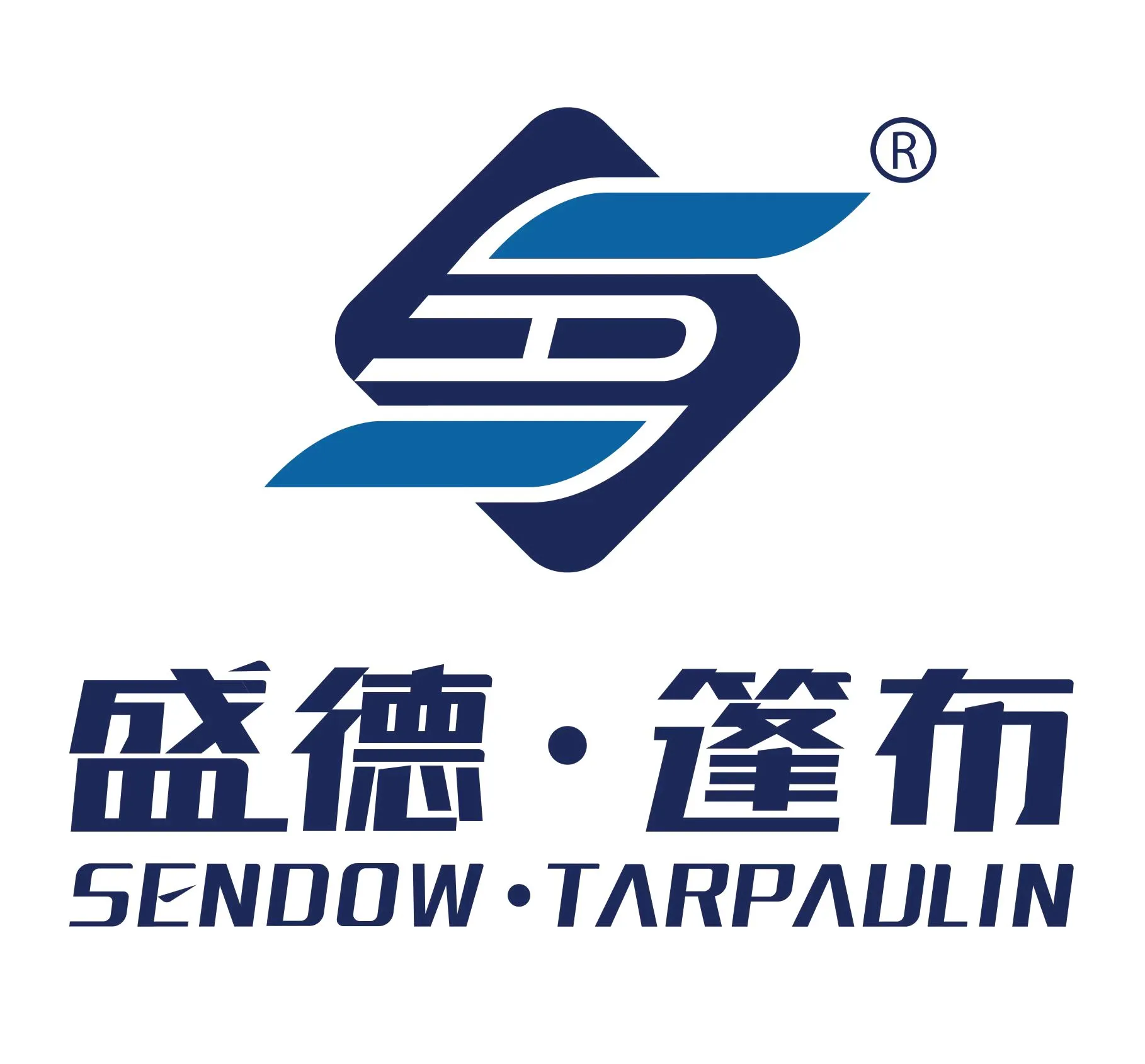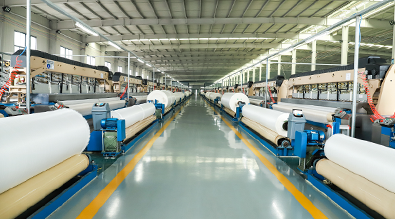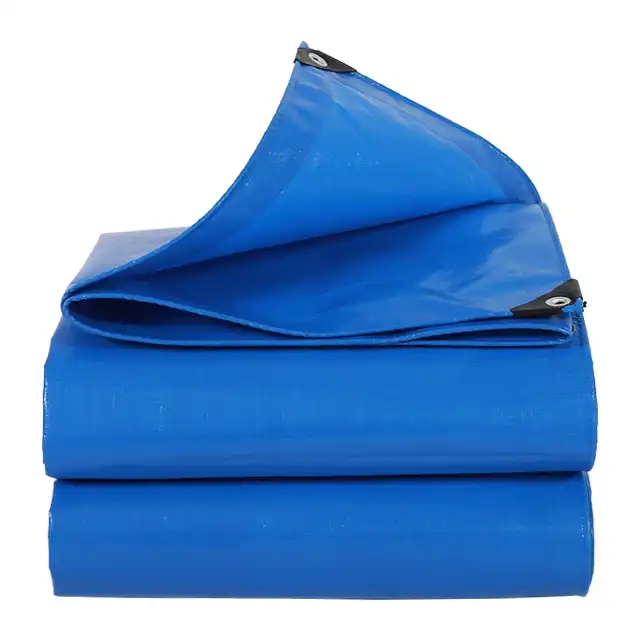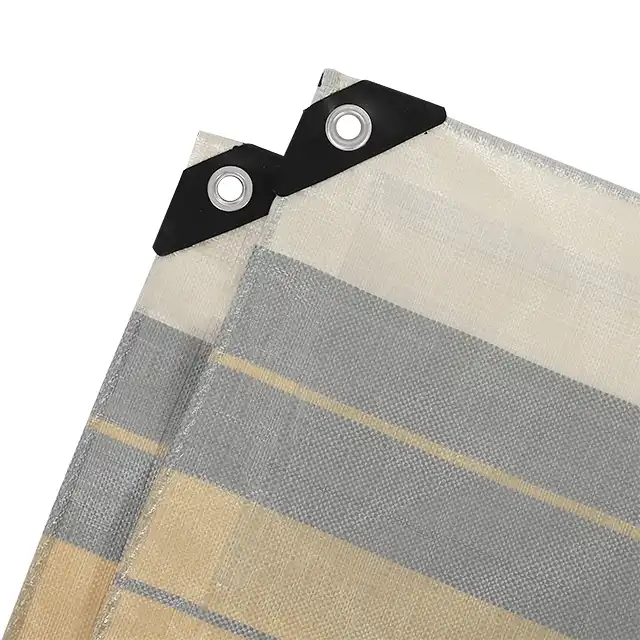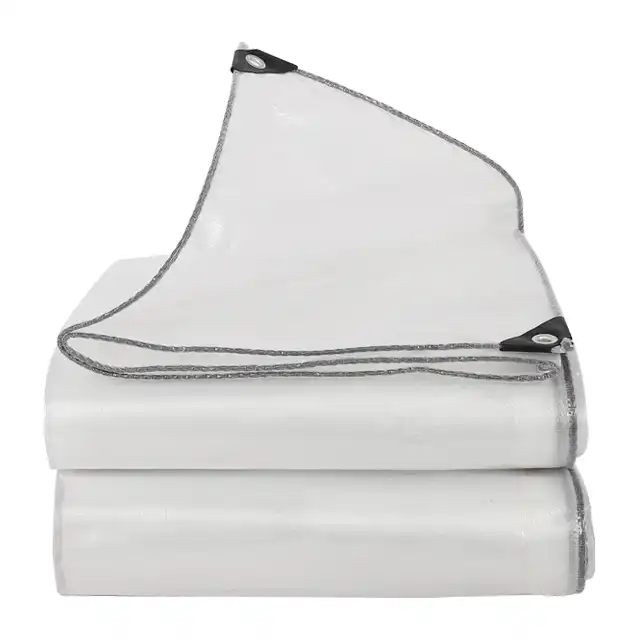Are Poly Tarps Breathable?
Poly tarps, widely used in various industries and applications, present a complex question when it comes to breathability. While these versatile polyethylene (PE) covers are renowned for their waterproof and protective qualities, their breathability is a nuanced topic that requires a comprehensive understanding of material science, manufacturing processes, and practical applications.
The Science Behind Poly Tarp Breathability
Understanding Material Composition
 Poly tarps manufactured by companies like Linyi Shengde Plastic Co., Ltd are typically constructed from high-density polyethylene (HDPE) woven fabric with a low-density polyethylene (LDPE) coating. This specific composition creates a dense, tightly woven material that inherently limits air and moisture transmission. The manufacturing process involves intricate weaving techniques, with fabric widths ranging from 1.5m to 5m, and yarn thicknesses between 400D to 2500D, which significantly impact the tarp's breathability characteristics. The company's advanced production capabilities, including over 30 high-tech extruding machines and 400+ Korea-imported automatic water-jet looms, enable precise control over fabric density. This precision means that while poly tarps excel in waterproofing and durability, they are not designed to be breathable in the traditional sense. The LDPE coating, which provides excellent water resistance and UV protection (1-7% treatment), effectively seals the fabric's pores, preventing significant air circulation.
Poly tarps manufactured by companies like Linyi Shengde Plastic Co., Ltd are typically constructed from high-density polyethylene (HDPE) woven fabric with a low-density polyethylene (LDPE) coating. This specific composition creates a dense, tightly woven material that inherently limits air and moisture transmission. The manufacturing process involves intricate weaving techniques, with fabric widths ranging from 1.5m to 5m, and yarn thicknesses between 400D to 2500D, which significantly impact the tarp's breathability characteristics. The company's advanced production capabilities, including over 30 high-tech extruding machines and 400+ Korea-imported automatic water-jet looms, enable precise control over fabric density. This precision means that while poly tarps excel in waterproofing and durability, they are not designed to be breathable in the traditional sense. The LDPE coating, which provides excellent water resistance and UV protection (1-7% treatment), effectively seals the fabric's pores, preventing significant air circulation.
Breathability vs. Water Resistance
When evaluating poly tarp breathability, it's crucial to understand the trade-off between water resistance and air permeability. The tarp's primary design focuses on creating an impermeable barrier against moisture, wind, and environmental elements. With features like 100% waterproofing, tear resistance, and arctic flexibility, these tarps prioritize protection over ventilation. For applications such as truck covers, construction site protection, greenhouse fabrics, and aquaculture impermeable tarps, the minimal breathability is actually adesirable characteristic. The tarp's ability to create a sealed environment helps maintain specific conditions, whether it's protecting goods from moisture or creating a controlled microclimate for agricultural purposes.
Practical Implications of Limited Breathability
Linyi Shengde's poly tarps, which have been exported to over 30 countries, demonstrate that limited breathability can be advantageous in numerous scenarios. In applications like car canopies, picnic pads, and scaffolding sheets, the tarp's low air permeability provides excellent protection against environmental factors. However, this characteristic means that when used in enclosed spaces or for extended periods, users must be mindful of potential moisture accumulation and condensation. The anti-corrosion and shrink-proof properties of these tarps help mitigate some of these concerns, but proper ventilation strategies might be necessary in specific use cases.
Environmental and Performance Considerations
Temperature and Condensation Management
The poly tarp's molecular structure, developed through advanced manufacturing techniques, creates a barrier that limits heat and moisture exchange. With a thickness ranging from 7-12 mil and weight between 100-180 gsm, these tarps can create a greenhouse effect when used in enclosed or semi-enclosed environments. Professional users, such as construction teams and agricultural workers, often employ strategic ventilation methods alongside poly tarps. The tarp's UV treatment and arctic flexibility allow for creative solutions that balance protection with airflow. For instance, creating small, controlled openings or using multiple layers with strategic positioning can help manage temperature and moisture buildup.
Customization and Advanced Solutions
 Linyi Shengde's strong R&D capabilities enable them to develop specialized tarp solutions that address specific breathability challenges. Their research team has successfully developed products with enhanced functional properties, including fire prevention and advanced waterproofing technologies. Customers can request custom configurations that might incorporate limited breathability features. The company's ability to produce tarps with various mesh counts (10x10 to 14x14) and adapt to specific requirements means that breathability can be somewhat engineered into the product, depending on the intended application.
Linyi Shengde's strong R&D capabilities enable them to develop specialized tarp solutions that address specific breathability challenges. Their research team has successfully developed products with enhanced functional properties, including fire prevention and advanced waterproofing technologies. Customers can request custom configurations that might incorporate limited breathability features. The company's ability to produce tarps with various mesh counts (10x10 to 14x14) and adapt to specific requirements means that breathability can be somewhat engineered into the product, depending on the intended application.
Performance in Different Environments
The versatility of poly tarps becomes evident when examining their performance across diverse environments. From scorching construction sites to humid agricultural settings, these tarps demonstrate remarkable adaptability. The anti-freezing properties and durability ensure consistent performance, even when breathability is limited. Professionals in industries like aquaculture, logistics, and construction appreciate poly tarps for their ability to create a stable, protected environment. The minimal breathability becomes a feature rather than a limitation, helping maintain specific conditions and protecting valuable assets from external elements.
Innovative Solutions and Future Developments
Emerging Technologies in Tarp Design
Linyi Shengde's commitment to innovation suggests ongoing research into advanced tarp technologies. Their development of ultra-wide width braiding machines and exploration of enhanced functional properties indicates a future where breathability might be more precisely controlled. Current poly tarp designs prioritize waterproofing, durability, and versatility. Future developments may introduce more sophisticated microporous technologies or hybrid materials that offer improved air circulation without compromising the tarp's primary protective functions.
Strategic Application and User Techniques
Understanding the breathability limitations of poly tarps allows users to develop strategic application techniques. Proper installation, periodic monitoring, and complementary ventilation strategies can help mitigate potential moisture-related issues. Professional users often combine poly tarps with additional ventilation tools or select specific tarp configurations based on their unique environmental requirements. The key lies in understanding the material's inherent properties and working within its design strengths.
Continuous Improvement and User Feedback
The poly tarp industry, exemplified by manufacturers like Linyi Shengde, continues to evolve through continuous improvement and user feedback. Their ISO 9001:2015 certification and rigorous quality testing demonstrate a commitment to meeting and exceeding customer expectations. By maintaining open communication channels and investing in research and development, manufacturers can progressively address challenges related to breathability and develop more sophisticated tarp solutions.
Conclusion
Poly tarps are not inherently breathable, but their sophisticated design offers superior protection and versatility across numerous applications. Understanding their material properties allows users to leverage their strengths while implementing complementary strategies for optimal performance. For more information or custom solutions, contact Linyi Shengde Plastic Co., Ltd at info@shengdetarp.com. Our dedicated team is ready to help you find the perfect tarp solution for your specific needs.
References
1. Smith, J. "Polyethylene Fabric Technologies in Industrial Applications" - Materials Science Quarterly, 2022
2. Chen, L. "Breathability and Performance of Synthetic Protective Covers" - Industrial Textiles Review, 2021
3. Rodriguez, M. "Advanced Manufacturing Techniques in Tarp Production" - Engineering Materials Journal, 2023
4. Thompson, R. "Environmental Applications of Synthetic Protective Membranes" - Environmental Technology Review, 2022
5. Nakamura, K. "Innovations in Protective Fabric Design" - International Textile Research Journal, 2023
6. Garcia, P. "Performance Characteristics of High-Density Polyethylene Fabrics" - Advanced Materials Engineering, 2022
